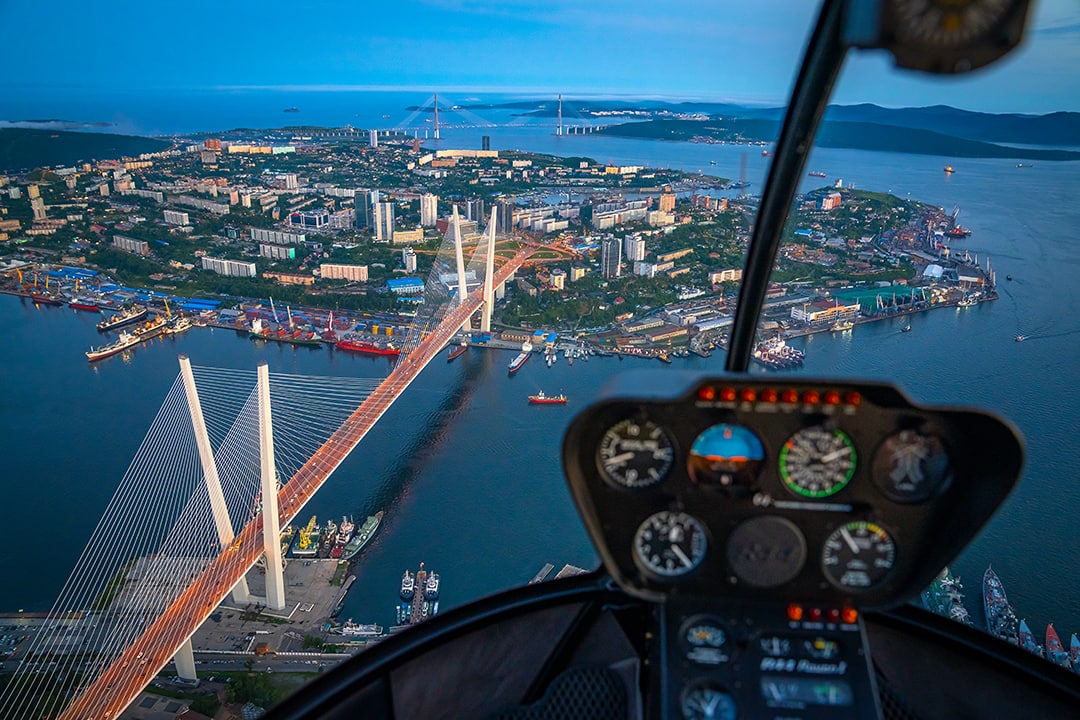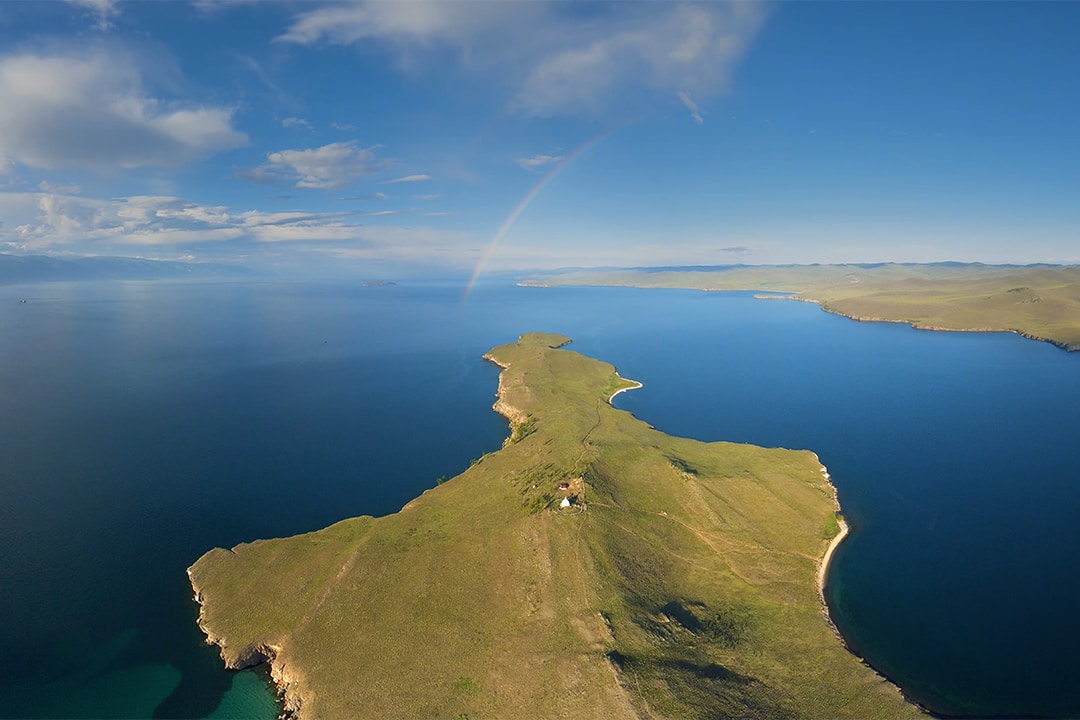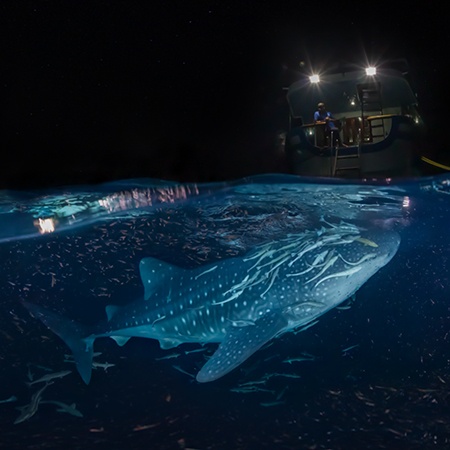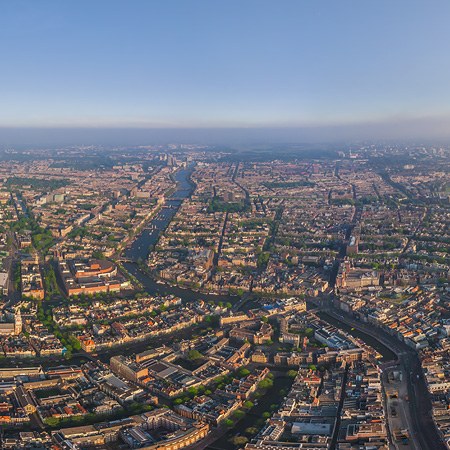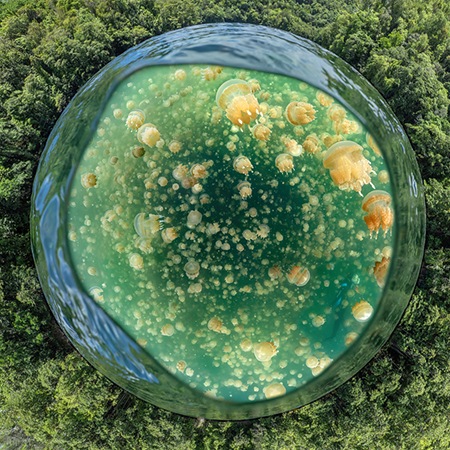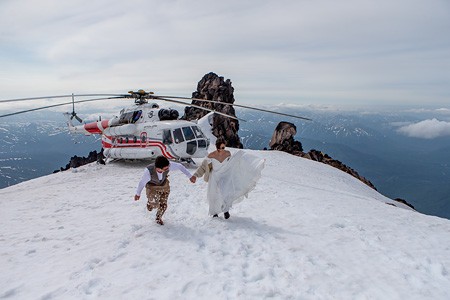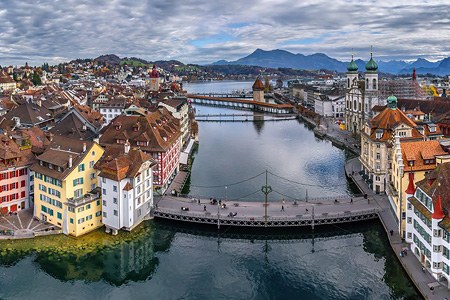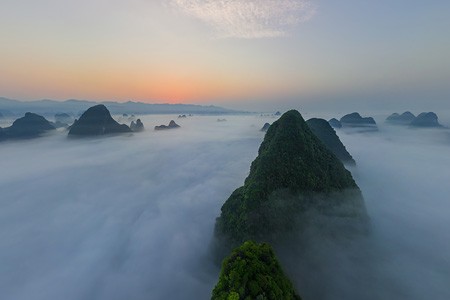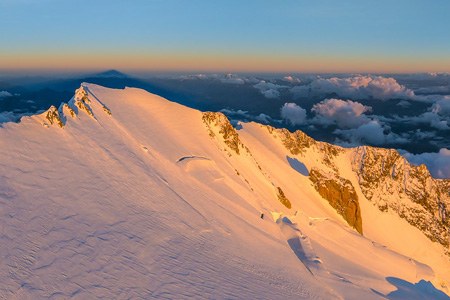The Land of Bears, Kurile Lake, Kamchatka, Russia
The Kamchatka Peninsula's volcanic terrain is a product of a rapid geological past, when it was plunged in and out of the ocean. The seismic activity is still present: 800 earthquakes are registered every year, and 30 volcanoes (300 in total) sometimes remind everyone of their active lifestyle with powerful (and not so powerful) eruptions.
One of the craters of the long-extinct Kamchatka volcano (caldera) is filled with picturesque Kurile Lake. It's the second largest freshwater reservoir in Kamchatka: 77 square km (second only to Kronotsky Lake with an area of 242 square km). Its average depth is 195 meters, reaching 316 meters in its deepest parts.
Kurile Lake is located on the territory of the South Kamchatka Wildlife Refuge, a UNESCO World Heritage Site, at the altitude of 104 meters above sea level. Volcanic islands decorate its smooth surface: Chayachy Island, Nizkiy Island, Serdtse Alaida Island, and Samang archipelago (lava domes reaching up to 300 meters high).

Adjacent to the northeastern part of the reservoir is 1578-meter high active Ilyinsky volcano of a perfect conic shape. Its lava flows directly into the lake forming several bays. On the western shore there is Dikiy Greben volcano reaching up to 1,080 meters high. On a clear day a surface of the lake becomes a mirror that reflects volcanoes, creating landscapes of unimaginable beauty.
Snow and rain constantly fill the lake so the water level fluctuations can reach 1.3 meters (with maximum values in May/June, and minimum values in April). Average water temperature near shore is about +7,6°C. The highest registered temperature at this famous Kamchatka destination was +10,8°C. However, there are many hot springs on the shore of the lake (with the temperature as high as +45°C).

An unprecedented number of carnivorous birds gather here during winter months: 300-700 Steller's sea eagles, 100-150 white-tailed eagles, and 50 golden eagles. There was a time when someone even saw a bald eagle here — a rare bird species on the brink of extinction. To top it off, one can also find a record number of such common birds as Pacific Gull — more than 1500 pairs.
Kurile Lake is one of Eurasia's largest locations of salmon spawning (Pacific salmon). Many rivers and streams fall into the lake, but only one river flows out of it — the Ozernaya River. The water practically boils when fish is going up against the current. Salmon population varies from 2 million to 6 million!

Another unique feature of Kurile Lake is a long salmon spawning period: from June to March. Both factors attract many brown bears to the lakeshore. Under normal conditions bears avoid each other, but during salmon spawning period they group together. One can observe up to 20 bears near the lake simultaneously: they are so preoccupied with fishing that they ignore not only other bears, but also humans.
Nevertheless, tourists are not allowed here, and can only observe bears from the watchtowers and dedicated campsites. Or through our panoramas!
And the story about our amazing journey to Kamchatka will be told, for the most part, by our producer and pretty muse Alina Trigubenko, who has already participated in AirPano projects, such as the one in Hong Kong. I will also add my comments to her story.

Stas and I instantly fell in love with Kamchatka when we first shot Tolbachik volcano eruption in December 2012. Nature, people, and even cold weather (-25 degrees Celsius) — everything around us was friendly and sincere. Since then I have been thinking about going back to Kamchatka all the time. And so when my phone rang in early August and a female voice said, "Hello, I'm calling from The Kronotsky Biosphere Reserve" I knew that it was an opportunity that I couldn't miss.
The tourist season is very short in Kamchatka: July, August, and September. The most "delicious" time is the fall colors at the very end of the season. This is what we planned to capture. After a month of negotiations, phone calls, and approvals we finally bought our tickets. We had 2 days before departure!

Alina: Our expedition to Kamchatka began in Elizovo, a small far eastern town. I noticed metal sheets covering walls of some houses to protect them from severe weather conditions.
I remember a thought, or rather a hope, popping up in my mind: what if the weather has already been preparing a surprise for us, which would catch us off guard? That would give us a chance to shoot powerful dramatic pictures.
Surprisingly, in spite of my stereotypical expectations, early September in Kamchatka turned out to be very warm, much warmer than it was in rainy Moscow.
Still sleepy upon arrival we were taken to meet the director of The Kronotsky Biosphere Reserve, Tikhon Igorevich Shpilenko. We received instructions, signed the papers, and went to see Petropavlovsk-Kamchatsky city. The only way to overcome jetleg is to stay awake until local evening time. To keep us in even better shape they scheduled our first flight for the following morning. We were going to see bears on Kurile Lake.

A: Our crew was very lucky. We had an opportunity to spend a night at Travyanoy cordon, where an arrogant clever fox posed in front of our cameras. In the morning, drawn by the smell of my cooking, it would hang around the kitchen trying to get a piece of our crew's breakfast. Rivers surrounding Travyanoy cordon are literally a bears' lair!
The only thing that separated us from these massive and seemingly dangerous wild animals was a light electric fence, but it did its job! When a wet bear's nose touches a stretched wire, it gets a rather painful shock.
However there was a case when precautions turned out to be a hindrance to a human being. Several years ago, a famous Japanese photographer came to Travyanoy cordon and decided to live in his tent, not in the house, to be closer to the surrounding wild nature. A bear took its chance, and the incident ended tragically.
But in most cases, according to ranger Konstantine, who accompanied us in this trip, it's the animals that need protection from humans, not the other way around. Of course, we carried protective ammunition to every photo shoot, but our ranger's main weapon was his knowledge of bear psychology, its behavior, and its habits. Apparently, if unprovoked, bears are not aggressive. Four "bipedal erectus" creatures and a strange flying thingy with a camera couldn't compete with a fat fish only a paw away from its mouth. Spawning season brings millions of red salmon, full of eggs and a death wish. Sounds horrible, but it's true: salmon dies after spawning to provide all the necessary nutrition to their offsprings!

We had a chance to photograph fishing bears, islands, and most interesting Kuthiny Baty Cliffs in good sunlight. Although it rained on the day of our departure, I can surely say that AirPano team is very lucky!
We didn't want to leave Kurile Lake. Where else could you see 10 bears roaming a few meters from you and ignoring your presence? (Perhaps the ranger could command them with his powerful stare?) It was a very thrilling incomparable experience. On the way back we stopped at the "Khodutka" hot springs. However instead of taking a deep in 40-degree healing water, we decided to take pictures. One can't omit any details when describing Kamchatka!
A: Our next stop was the Valley of Geysers. This is a truly amazing place, one of five similar places in the world and the only one in Eurasia. During a massive landslide in 2007 some geysers ended up underwater, but nobody was hurt: mudslide stopped a meter from a residential house. Photo panorama of the Valley clearly shows the scale of the disaster.
Fortunately, many geysers survived underwater and eventually turned the lake emerald, making it yet another signature sight of the Valley of Geysers. Our first shooting day was marvelous. Getting used to the local conditions, the following morning we were going to shoot a 360-degree video of the "Grand" geyser in all its glory: a 12-meter water pillar, clouds of steam and all...

A: During our first attempt to shoot an erupting geyser from above, a powerful jet of steam hit our helicopter. Losing control it crashed into a mud wall on the opposite bank. Our pilot Stas had to go on an equipment salvage expedition: first he had to climb rocks, and then dive into the murky waters of the lake where hidden hot springs caught him off guard. Despite of the dangers all parts of our photo unit were collected and Stas got off with noting more than a burned heel.
I would tell you more about our photo experience, but it so happened that a natural disaster took us by surprise, and we were trapped in the Valley of Geysers with almost no food and no communication.
A: It was a powerful cyclone that killed dozens of people in Japan few days earlier. Our wooden hut, a "guest house", was shaking from wind gusts. It has rained for three days in a row. By a fantastic coincidence, a helicopter with wealthy tourists landed in the valley right before the cyclone. They had a good supply of food, and moreover, they brought a professional chef! Thanks to Dmitry who shared his hand-made candies with us after our crew finished last chocolate bar from our supplies. On the fourth day even they ran out of food, and so we proudly contributed a bag of oatmeal.
On the fifth day the cyclone disappeared along with three meters of water in the lake! Of course, our team was the first to photograph this extraordinary event and to fly over shallow lake with a video camera. We were the lucky ones who saw and, of course, documented several geysers, previously hidden under water, coming to life. We saw how a geyser pushed through the mud: a stream of boiling water literally breaks the soil destroying everything on its way up! What a fantastic spectacle.

Yes, the sky cleared, helicopters brought more tourists, Alina returned to mainland, and Stas and I headed to Uzon volcanic caldera. You will read about it in the next article, and here I want to share only the emotional part of my story.
It was a celebration of colors in Uzon caldera: yellow birches, red blueberry and cranberry bushes, green spruce groves, and blue waters of thermal lakes. I wouldn't be exaggerating if I call it one of the most beautiful places on the planet, especially when seen from the air.
It was a filming location of a famous Soviet sci-fi movie called "Sannikov Land".
Everywhere you look you see something seething, bubbling, and smoking. The underground kitchen knows no rest: boiling mud volcanoes of different colors, jets of steam shooting from the surface, hot springs and lakes... I guess this is the way our planet looked at the very beginning.
On the way back from one of our photo shoots Stas spotted a big bear harvesting blueberries thirty meters away from our trail. The beast paid no attention as we walked by. I rushed into the hut to pick up my telephoto lens. No, the bear didn't notice people: eating berries before hibernation was much more important to him than a human with a tripod. Later on rangers told us that such a calm behavior was rather deceptive. "Two leaps" they estimated the distance between the bear and myself when I showed them the photograph.
One day in Uzon caldera flew by unnoticed. The weather forecasts talked of another storm. There was a good chance to be cut off from the outside world, just like in the Valley of Geysers. We didn't want to push our luck and returned to Petropavlovsk-Kamchatsky on the next flight.
Virtual tour "The Land of Bears, Kurile Lake, Kamchatka, Russia" is in the trilogy of aerial photo shoots of Kamchatka. Other virtual tours from the trilogy are "Valley of Geysers" and "Uzon caldera".
AirPano team would like to express our gratitude to the Russian Geographical Society for their financial contribution to the creation of this virtual photo tour and to the admistration of the Kronotsky Biosphere Reserve and personaly its direcror Shpilenok Tikhon Igorevich for perfect organization of the photo shoot, and warm welcome.
Photo and text by Dmitry Moiseenko and Stanislav Sedov
16 January 2014
Read more
Photogallery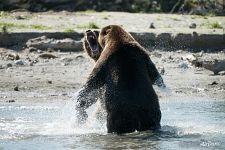 Bears
Bears
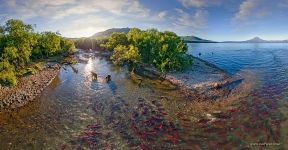 Land of Bears
Land of Bears
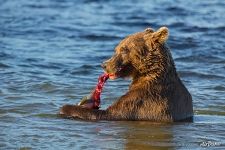 Bear eating a fish
Bear eating a fish
 Land of Bears
Land of Bears
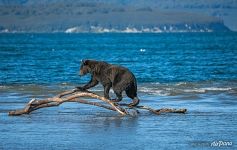 Nimble bear
Nimble bear
 Kamchatka bear
Kamchatka bear
 Bears couple
Bears couple
 Bear in the Kurile Lake
Bear in the Kurile Lake
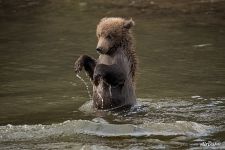 Little bear on its hind legs
Little bear on its hind legs
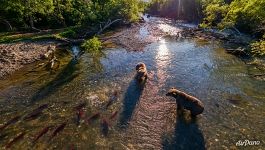 Bears on Kurile Lake
Bears on Kurile Lake
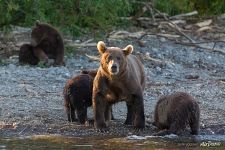 Bears
Bears
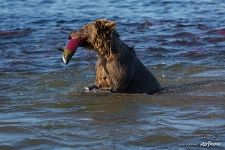 Fisher
Fisher







